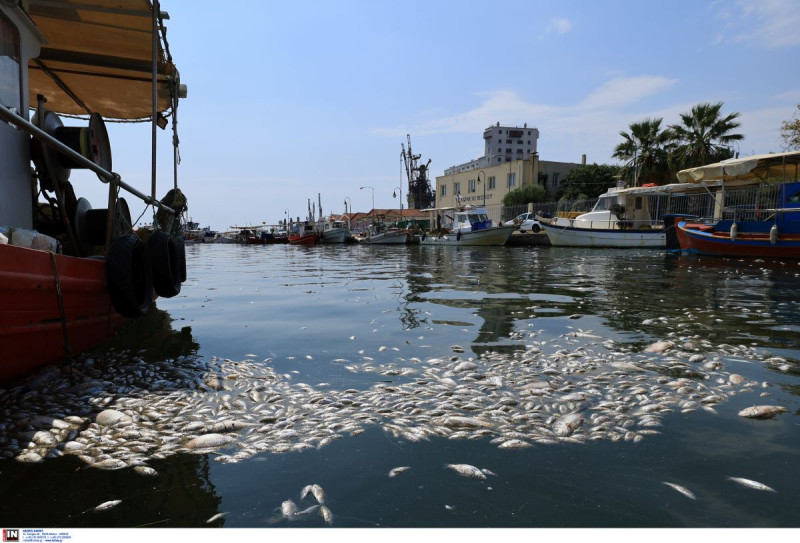Dead fish are an invitation to…bite sharks
The authorities are proceeding with the installation of a second grid in Xirias, in Volos, just before its outlet into the Pagasitic Gulf, to contain the dead fish until they are collected.
The installation of the second mesh began on Friday morning with the aim of containing the large quantities of dead fish and facilitating their collection.
The dead fish … invitation to nibble on sharks
At the same time and as long as the dead fish remain in Pagasitikos, they are likely to be a challenge – an invitation to … “bite” by sea predators, including sharks, if they are not collected in time, as clearly stated by Christos Taklis, marine biologist and administrator of the Hellinikon Biodiversity Observatory, who drew the attention of people swimming, so that an accident does not happen.
The scientist spoke to Radio ENA and Ilias Koutseri and predicted that a problem is expected to exist in Karla as well, because the water is decreasing and not enough for the existing fish, whose population has increased due to the volume of water from the floods.
According to Mr. Taklis, the situation with the dead fish in Pagasitikos from Karla, was something expected, which scientists expected to happen, it just happened with a much larger volume of fish that the Biodiversity Observatory could see.
“The oxygen will decrease, the fish will suffocate
“This means that even in Lake Karla, in which the waters have fallen, a huge problem will be created, because the oxygen will be reduced, as a result of which the fish that are there will suffocate,” the biologist pointed out.
As he explained, if the lake level drops further and there are still so many fish, oxygen will decrease.
Chibusi for the predators
Regarding the situation in Pagasitikos, Mr. Taklis said that no one took the initiative to limit the volume of fish from being washed up and spread in Pagasitikos, because the authorities “distributed” the responsibility among themselves.
He said that with the rains and wind expected, the dead fish already in the Gulf will spread throughout the Pagasitic, however there will be no impact, other than attracting predators already present in the Pagasitic such as dolphins, seals, turtles and occasionally some species of sharks and dead fish, will be a ‘nibble’ for these species.
“Even a dolphin can attack a human, for … food”
The point is not to have an accident to people, who can tell that we are entering the sea, but a predator, even a dolphin can attack a person if he falls into such a “sting”.
“Because man cannot see under the bottom what is going on, there is this problem, although with the unsightly condition, one will hardly swim. Just be careful and keep in mind that something can happen,” said the marine biologist.
“In Pagasitiko we have seen foxes, white and blue shark, mako etc.”
Mr. Taklis pointed out that in Pagasitikos we have seen foxes, white and blue sharks, mako, so large species can enter not only dogfish, galeos and other sharks.
As for the jellyfish that didn’t appear in the sea this year, he pointed out that purple jellyfish do a four-year cycle, then they calm down, one might see 1-2 individually, and the next surge will follow in a few years, unless something happens in between.
Source: Skai
I have worked as a journalist for over 10 years, and my work has been featured on many different news websites. I am also an author, and my work has been published in several books. I specialize in opinion writing, and I often write about current events and controversial topics. I am a very well-rounded writer, and I have a lot of experience in different areas of journalism. I am a very hard worker, and I am always willing to put in the extra effort to get the job done.











